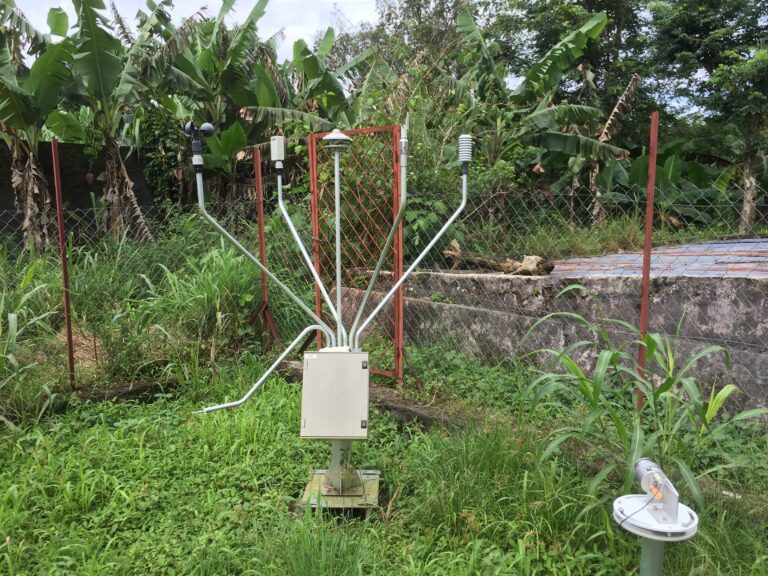Yvette Ramos, international consultant to the WMO, offers advice on how NMHS providers in developing countries can modernize
In developing regions, such as Africa, small islands in the Caribbean and Southeast Asia, the low availability of weather and climate services is threatening social and economical development. However, programs have been developed in these regions to deliver a step-change in the use and provision of weather and climate information and therefore support poverty reduction and promote socio-economic development. These have mainly been led by international donors from developed countries.
The ultimate goal of these programs is always quite the same: to implement modern tools and equipment to enhance the capabilities of national meteorological and hydrological service (NMHS) providers in the developing world. These programs help transform NMHS providers into modern business entities that deliver high-quality services to their customers.
But when an NMHS provider wants to modernize its organization, it is important to align operations and strategy with all stakeholders involved in the business and to ensure that a strong leadership team is in place to develop new products and services that add value, starting first by aligning with the country’s national development plan.
One thing that is key to note when modernizing developing countries’ NMHS providers is that just collecting data is not profitable. The services created and products developed from hydromet data are what bring economical benefits and value to the NMHS providers organization. Data should be transformed into easy-to-understand information for users, and decision-making tools for strategic stakeholders. Enhancing the soft skills of the NMHS’s staff and ensuring close stakeholder engagement during all parts of the modernization are also extremely important.
Here are five key elements to consider when looking to modernize NMHS providers in the developing world:
Element one: Managing change
Strong leadership and change management are key factors in modernizing NHMS providers. It is important that any changes are visible at national, sub-regional and international levels. The NHMS organization itself should be responsible for adapting its human resources to understand changes and to try to limit resistance to change.
A strategic planning process team should be identified to liaise with stakeholders for an efficient service delivery and the design of the business plan. This team should also monitor the process of cost recovery, look to generate funds, and oversee the development of new projects. This process is well defined in the WMO’s model ‘Strategy for service delivery and its implementation plan’.
As we are all aware, change does not happen overnight. I can imagine the process happening in three phases. Phase one is preparing for change and includes identifying points of resistance and undertaking readiness assessments. Phase two is managing change and includes the creation of a resistance management plan, and phase three is reinforcing change, which includes collecting feedback and looking for pockets of resistance.
Element two: Develop planning and quality management tools
NMHS providers can raise the credibility of their services and planning tools just by implementing a quality management system, such as ISO 9001 certification. By gaining certification from a quality management system, NMHS providers prove they deliver high-quality services, which are effective and efficient. Furthermore, by embedding a risk management tool and a monitoring and evaluation process for new services, the NMHS can increase its performance at different levels, such as economically, technically, and from the perspective of human resources and processes.
Element three: Aligning operations and strategy
Operations that are not aligned with the organization’s strategy are simply not profitable in the long run. Strategy aims should be closely aligned with projects being undertaken to ensure that results meet the goals of all stakeholders involved. By aligning all internal activities and initiatives to the strategy, value can be added to the products and services delivered, and it helps to sustain a knowledge management process.
It is a good idea to develop an alignment indicator that incorporates how different parts of the modernization plan should align. This could include how the organization structure aligns to the NMHS’s overall vision, how the capacity development plan aligns to the organization needs, and how financial resources integrate with the capacity development plan.
Element four: Enhancing staff soft skills
By enhancing the soft skills of staff within an NMHS provider and by auditing their performance on a regular basis, services can be improved. Therefore human resources management is an important process within an NMHS modernization plan. It is essential that good working conditions are provided, adequate budgets for human resources are assigned, and that a proper environment for the staff to learn is provided. By offering schemes, such as employee benefits for good work, NMHS providers can ensure staff loyalty and high service quality.
To develop this, the NMHS should undertake a comprehensive stakeholder engagement process, which includes the implementation of a proper Capacity Development program covering several key areas, such as communications, negotiation and conflict resolution, risk/crisis management, media relations, and stakeholder dialog techniques.
Element five: Boosting stakeholder engagement
The development of a single project implementation unit, which is in charge of the project’s service delivery, will help with stakeholder engagement. This unit should be responsible for communicating with all stakeholders the service delivery strategy, finance details and marketing plans. This will bring all stakeholders closer together and ensure complete visibility throughout the project.



